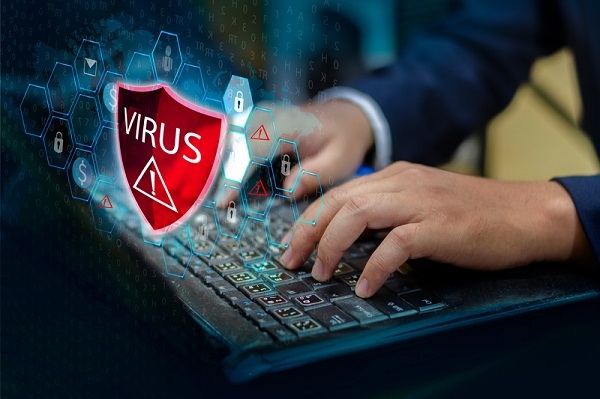
 Data Structure
Data Structure Networking
Networking RDBMS
RDBMS Operating System
Operating System Java
Java MS Excel
MS Excel iOS
iOS HTML
HTML CSS
CSS Android
Android Python
Python C Programming
C Programming C++
C++ C#
C# MongoDB
MongoDB MySQL
MySQL Javascript
Javascript PHP
PHP
- Selected Reading
- UPSC IAS Exams Notes
- Developer's Best Practices
- Questions and Answers
- Effective Resume Writing
- HR Interview Questions
- Computer Glossary
- Who is Who
VIRUS: Vital Information Resources Under Seize
Introduction
In the modern world, most people use computers & internet facilities. Computers made our life easy, but along with these facilities, we are at threat of losing data due to attacks of computer viruses. These viruses became stronger day by day. To protect computer systems from virus attacks we need to take precautions like installing & running antivirus software, we should carefully use computers & internet facilities. A computer virus is a malicious software that interrupts the functioning of the computer system. This may cause corruption, data theft, and also the crashing of a computer.

What is VIRUS?
Vital Information Resources Under Seize abbreviated as VIRUS.
It is a type of computer program designed intentionally to disrupt a computer's functioning.
Attack of viruses causes operational issues, damage operating systems & programs, data loss & thefting of data also crashing of the device.
Different computer viruses spread in different ways.
Some examples of computer viruses are Trojans, Worms & Ransomware.
Spreading of a computer caused through-
USB, hard discs, floppy discs
Infected email attachments
Downloading malicious data
Computer networks
Fake anti-virus software
Social media
Random online advertisements
The main types of computer viruses are
Boot sector virus
Polymorphic virus
Resident virus
File infector virus
Web scripting virus
Direct action virus
History of VIRUS
Virus has the ability of self-replication.
In 1949, John Von Neumann was given the theory of self-replication of computer programs.
In 1970, Creeper Virus was the first virus that was detected by ARPANET.
This virus was the experimental self replicating program written by Bob Thomas at BBN technologies & then to delete this program reaper was created.
Design of a VIRUS
Generally, computer viruses have three parts infection mechanism, trigger & payload.
Infection mechanism:
It is also known as a virus vector.
This determines the way of spreading a computer virus.
Using the search route, some viruses locate & infect files on the disk & other viruses infect running files.
Trigger
It is also called a logic bomb.
It determines the condition of activation of a payload like a date, time, size of the disk, opening of a particular file, etc.
Payload
The part of a virus that implements malicious activity such as damaging files, crashing a device, thefting of sensitive data or confidential data, or spying on an affected system.
Sometimes it causes slow down of the system is known as a freeze.
Sometimes payloads are not harmful but the main aim is to spread the message to many people.
Phases of viruses
There are four phases of activating a computer virus are as follows
Dormant phase - At this phase virus detect its target waits until activate by a trigger.
Propagating phase - Virus starts replicating itself in various parts of a computer.
Triggering phase - In this phase trigger phase get activated & execution of the program starts.
Execution phase - In this phase payload is release & desctruction of comuter system starts.
Effects & countermeasures
Effects of a computer virus on a device
Crashing of a device
Error notification
Missing some data files
Processing of a device gets slower
Amount of storage of a device gets reduced.
Countermeasures
Install the latest antivirus & antispyware software & keep it updated.
Do regular scans of antivirus software.
Virus infection may cause corruption of data, so keep a backup of data.
Do not click on any link sent via email or through social media platforms by an unknown sender.
Download a hardware-based firewall.
Scan downloaded files from email or any browser.
Do not install pirated software.
Operate the run disk cleanup, registry scanner & defragmentation at least once a week.
Computer virus v/s pathogen
Sr no. |
Computer virus |
Pathogen |
|---|---|---|
1 |
A computer viruses can replicate by copying themselves into another program |
Pathogen can replicate inside the cell of a living organism. |
2 |
These viruses are created by humans. |
Pathogens are generally created by biological evolution sometimes by humans. |
3 |
They can spread through infected email attachments, computer networks, social media, downloading malicious data from insecure sites, etc. |
They can spread through contaminated air, food & water, or through vectors. |
4 |
To avoid the detection by antivirus software, they can change the code in its copies. |
They produce more replicas to resist the effect of antibodies & drugs. |
5 |
They infect files in devices. |
They infect the cells of the host. |
Conclusion
This article covers a brief description of VIRUS.
Vital Information Resources Under Seize (VIRUS) are designed to disrupt the functioning of computers.
Some examples of viruses are trojans, worms & ransomware.
Attack of viruses causes operational issues, damage operating systems & programs, data loss & thefting of data.
Also we have learned the design of a virus in brief.
Virus attacks on a computer can be prevented by antivirus & regular scanning of OS by antivirus software.
FAQs
Q1. What is malware?
Ans: A type of software designed to cause turbulence in the computer server or network to monitor private information of any user.
Q2. Can bugs be a virus?
Ans: Bugs are errors or flaws in software. They are not viruses.
Q3. What is ransomware?
Ans: Ransomware is malware that infects computers & then encrypts personal identifiable information & other sensitive data & they demand ransom for releases the data.

